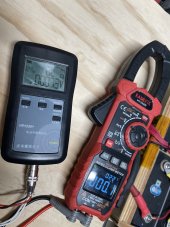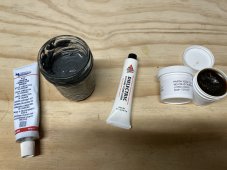I've just purchased 4 EVE LF280K cells from 18650 Battery Store. These have two screws on each of the positive and negative terminals. They included bus bars.
At any rate, I am finding a voltage drop between two of the cell pairs, each 0.1V at 20A charging. That adds up to 10 mOhm. As you can imagine, I am a bit concerned how this will perform at 100A -- instead of the 4 watt loss, I'm going to be looking at 100W. Not usable.
I've measured between the sides of the bus bar, and that's not where the voltage drop is coming from. I've measured cell terminal to bus bar, and it's actually 4 mV *higher* than cell terminal to screw (why would going through the screw and nut, to the very same bus bar, be a better current path?). This is very odd, because the nuts are compressing the bus bar to the cell terminal quite well, so it clearly makes contact.
I am thinking the problem has to be simple contact resistance. Any other possibilities, or is that about right?
Thanks
At any rate, I am finding a voltage drop between two of the cell pairs, each 0.1V at 20A charging. That adds up to 10 mOhm. As you can imagine, I am a bit concerned how this will perform at 100A -- instead of the 4 watt loss, I'm going to be looking at 100W. Not usable.
I've measured between the sides of the bus bar, and that's not where the voltage drop is coming from. I've measured cell terminal to bus bar, and it's actually 4 mV *higher* than cell terminal to screw (why would going through the screw and nut, to the very same bus bar, be a better current path?). This is very odd, because the nuts are compressing the bus bar to the cell terminal quite well, so it clearly makes contact.
I am thinking the problem has to be simple contact resistance. Any other possibilities, or is that about right?
Thanks
Last edited:




